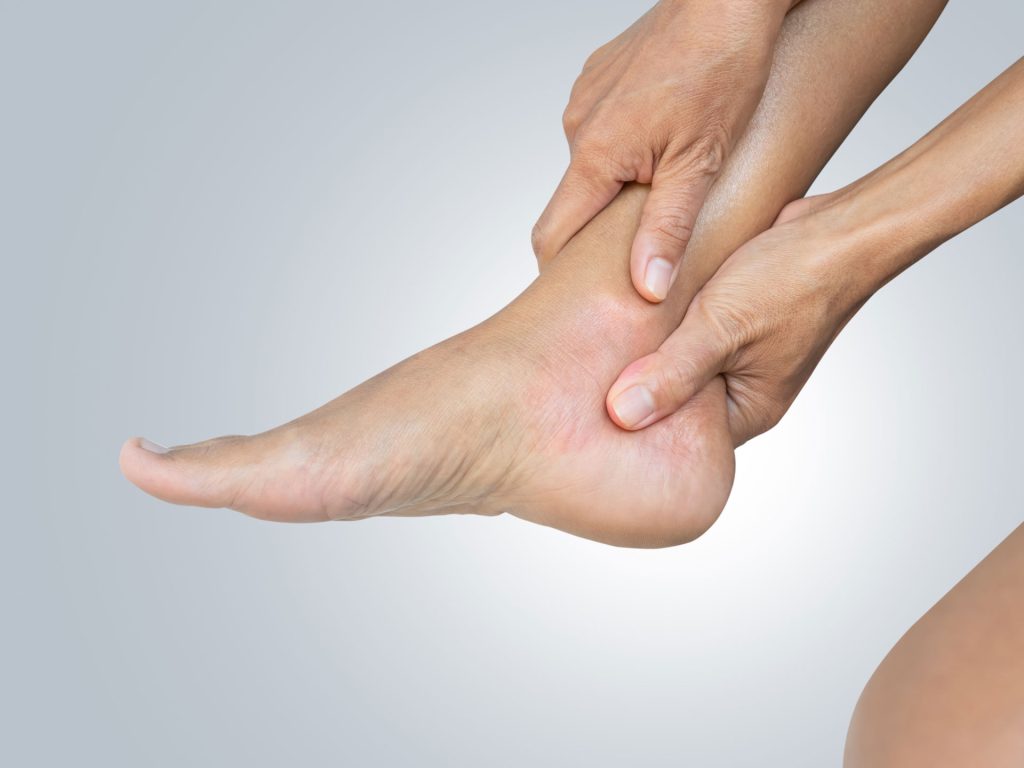For those enduring the persistent pain of plantar fasciitis, finding relief can feel like an uphill battle. Traditional treatments like rest, orthotics, and stretching sometimes fall short, leaving many frustrated. However, shockwave therapy is emerging as a promising alternative.
This non-invasive treatment stimulates the body’s natural repair processes, targeting the source of pain directly. With its growing success rate, shockwave therapy is proving to be a game-changer for individuals seeking long-lasting relief from the discomfort caused by this common foot condition.
What is Shockwave Therapy? A Comprehensive Overview

Shockwave therapy, also known as Extracorporeal Shock Wave Therapy (ESWT), is a non-invasive treatment designed to alleviate pain and promote healing in musculoskeletal conditions. It has shown promising results in treating plantar fasciitis, a condition characterized by inflammation and pain in the plantar fascia, the ligament that supports the arch of the foot.
At its core, shockwave therapy utilizes targeted acoustic energy delivered through a handheld device. This energy creates microtrauma in the affected tissue, which triggers the body’s natural healing processes. This process stimulates the formation of new blood vessels, improves circulation, and promotes tissue regeneration. Additionally, it can reduce pain by desensitizing nerve endings and breaking down calcified deposits in the inflamed area.
One of the key advantages of shockwave therapy is its non-invasive nature. Unlike surgical procedures, it doesn’t require cutting into the skin or inserting medical instruments into the body. The treatment is performed on an outpatient basis, often taking just 10 to 20 minutes per session, with minimal recovery time required. For most patients, multiple sessions are recommended to achieve optimal results.
Shockwave therapy provides a middle ground for individuals who don’t respond well to traditional treatments like rest, ice, or orthotics but wish to avoid surgery. Its ability to target the source of pain while stimulating long-term healing makes it an effective and appealing option for those suffering from the persistent discomfort of plantar fasciitis.
Related: Managing TMJ Disorders with Chiropractic Adjustments
How Does Shockwave Therapy Target Plantar Fasciitis Pain?
Shockwave therapy is a non-invasive treatment that has shown significant promise for addressing the pain and inflammation caused by plantar fasciitis. By delivering targeted acoustic waves to the affected area, it provides both immediate pain relief and long-term healing support. Here’s how it works:
- Stimulates Tissue Healing
Shockwave therapy generates controlled microtrauma in the plantar tissue. This triggers the body’s repair mechanisms, leading to increased cellular activity and tissue regeneration. This process helps the damaged plantar fascia recover more effectively. - Improves Blood Flow
The acoustic waves promote the formation of new blood vessels (neovascularization) in the affected area. Better blood flow ensures that oxygen and nutrients reach the damaged tissue, enhancing the healing process. - Reduces Nerve Sensitivity
The treatment overstimulates the nerve endings in the heel, which temporarily desensitizes them. This results in an immediate reduction in perceived pain and discomfort. - Breaks Down Calcified Tissues
Shockwave therapy has the ability to dissolve small calcium deposits found in the plantar fascia. These deposits are often a source of chronic pain, and their breakdown allows for smoother movement and less discomfort. - Promotes Collagen Production
The therapy also stimulates collagen synthesis, a critical component in maintaining the strength and elasticity of the plantar fascia. Restored collagen improves the durability and stability of the foot.
By addressing both the symptoms (pain) and root causes (inflammation and tissue damage), shockwave therapy provides a comprehensive approach to treating plantar fasciitis. This non-surgical solution offers a viable pathway for patients seeking effective and lasting relief.
Related: Your Guide to Better Pain Management with Chiropractic Therapy
Evidence and Studies Supporting the Effectiveness of Shockwave Therapy
The effectiveness of shockwave therapy (SWT) in treating plantar fasciitis has been substantiated through numerous studies and clinical trials. Research consistently highlights its potential to significantly reduce pain and improve the quality of life for patients, particularly those who have not responded to traditional treatments.
A 2020 study published in Acta Ortopédica Brasileira assessed the impact of single-dose shockwave therapy on patients with chronic plantar fasciitis. Over 56 participants were evaluated for pain levels, functional abilities, and quality of life at intervals of 3, 6, and 12 weeks post-treatment. Results showed significant improvements across all metrics, with a marked reduction in pain and enhanced functionality noted even after three months.
Similarly, a 2022 study in Journal of Clinical Medicine examined the long-term effectiveness of extracorporeal shockwave therapy (ESWT) in amateur runners with plantar fasciitis. Conducted over five years, the research found that ESWT effectively reduced pain intensity during daily and recreational activities. By targeting inflamed tissues and promoting healing, the therapy provided sustained relief for participants. Those combining ESWT with other treatments experienced even greater benefits.
Additional data from Healthline indicates that SWT reduces the thickness of the plantar fascia and alleviates inflammation. With success rates ranging from 44% to 80%, the non-invasive nature of SWT makes it an appealing alternative to surgery, particularly for patients seeking minimally disruptive options.
Together, these findings underscore the growing consensus that SWT is a reliable and effective treatment for plantar fasciitis, offering both immediate and long-lasting relief for many sufferers.
Related: SoftWave Therapy Basics: How It Works and Why It’s Revolutionary
What to Expect During Shockwave Therapy Sessions

Understanding what happens during a shockwave therapy session can ease any concerns and help you feel prepared. This non-invasive procedure, ideal for addressing plantar fasciitis pain, is straightforward and efficient. Here’s what you can expect:
- Initial Assessment
Before starting, your specialist will assess the treatment area. They will pinpoint the exact location of the pain using manual palpation and may discuss your medical history, symptoms, and treatment goals. - Preparation of the Treatment Area
Once the target area is identified, ultrasound gel is applied to your skin. This gel is essential for ensuring the acoustic waves penetrate the tissue effectively. - Delivery of Shockwaves
A handheld device is used to administer the shockwaves. During the session, you’ll feel pulses on the treatment site, which might cause slight discomfort but are generally well-tolerated. Each session typically lasts 5 to 15 minutes. If necessary, the intensity of the waves can be adjusted based on your comfort. - Post-Treatment Guidelines
After the session, you can return to your normal daily activities. However, it’s advisable to avoid strenuous exercise for 48 hours. Minor soreness or swelling in the treated area is normal and usually subsides within a day or two. - Follow-Up Sessions
Most patients require 3 to 6 sessions, spaced about a week apart, to achieve optimal results. The effects of the treatment are cumulative, with significant improvements often noticeable after just a few sessions.
By following these steps, shockwave therapy effectively targets the root cause of plantar fasciitis, offering pain relief and promoting long-term healing.
Related: Spinal Traction: Back-on-Trac Therapy for a Healthier Back and Spine
Who is a Good Candidate for Shockwave Therapy?
Shockwave therapy offers an effective, non-invasive treatment option for individuals with plantar fasciitis, particularly those who have exhausted traditional methods without success. Identifying whether you’re a good candidate involves assessing specific conditions and treatment goals. Here’s a detailed outline:
- Chronic Pain That Resists Conventional Treatments
Shockwave therapy is ideal for individuals experiencing chronic pain, such as plantar fasciitis, which has persisted for at least 4 to 6 weeks despite other treatments like medication, physical therapy, or orthotics. - Desire to Avoid Surgery or Downtime
If you prefer to avoid invasive surgical options and require minimal recovery time, this procedure is a suitable choice. Shockwave therapy allows you to resume light daily activities immediately, with most patients noticing improvements within weeks. - Soft Tissue or Tendon Injuries
Conditions like Achilles tendinitis, patellar tendinosis, or calcific tendonitis also respond well to this treatment, making it suitable for those with soft tissue and tendon-related pain. - Interest in Promoting Natural Healing
Candidates with a desire to stimulate the body’s natural reparative processes are ideal for this therapy. It boosts circulation to the affected area, encourages cell repair, and helps break down calcium deposits. - Commitment to Supportive Measures
Good candidates understand the need for multiple sessions (typically 3 to 6) and are willing to adhere to recommended activity modifications and follow-up treatment plans for optimal outcomes.
Overall, shockwave therapy is a valuable option for treating plantar fasciitis and related conditions. However, individuals with certain conditions like open wounds, pregnancy, or blood clotting disorders should consult their healthcare provider to determine suitability.
Practical Tips for Maximizing Results After Shockwave Therapy
Shockwave therapy is an effective treatment for plantar fasciitis, but the steps you take after each session can significantly impact your results. Proper post-treatment care ensures that the benefits of therapy are fully realized while minimizing discomfort. Here are some practical tips to follow:
- Rest the Treated Area
Avoid strenuous activities that put stress on the treated area for at least 48 hours. While light walking is fine, refrain from running, jumping, or heavy lifting during this period. - Skip Anti-Inflammatory Medication
Avoid taking nonsteroidal anti-inflammatory drugs (NSAIDs) like ibuprofen or aspirin after treatment. These medications can interfere with the healing process triggered by shockwave therapy. If you experience discomfort, stick to acetaminophen for relief. - Avoid Ice Therapy
Resist the urge to apply ice to the treated area, as it may counteract the body’s natural healing response. Allow your body to balance inflammation naturally, as this is a part of the recovery process. - Stay Hydrated
Proper hydration is key to supporting tissue regeneration. Drink plenty of water to help flush out toxins and promote cellular repair. - Follow Through with Recommended Exercises
Your therapist may suggest stretches or strengthening exercises to improve flexibility and support recovery. Consistency with these will enhance your outcomes.
To ensure the best results, consult trusted professionals like Dr. Victor Benson at Benson Chiropractic in Muscoda, Wisconsin. His expertise in shockwave therapy and comprehensive care will help you regain mobility and reduce pain effectively. Reach out to Benson Chiropractic today to elevate your recovery plan!

